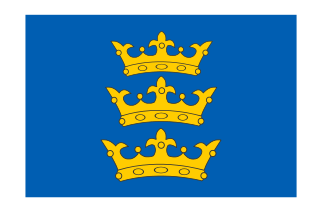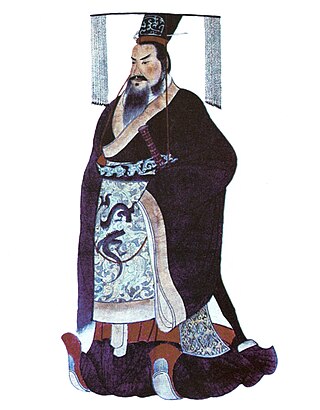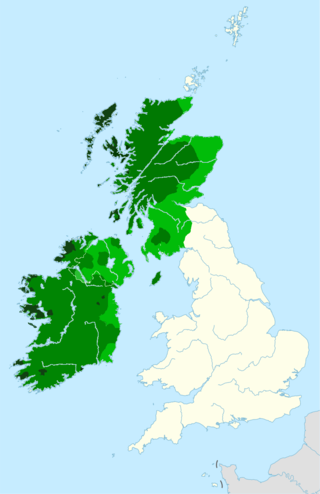A prince is a male ruler or a male member of a monarch's or former monarch's family. Prince is also a title of nobility, often hereditary, in some European states. The female equivalent is a princess. The English word derives, via the French word prince, from the Latin noun prīnceps, from primus (first) and caput (head), meaning "the first, foremost, the chief, most distinguished, noble ruler, prince".

Baron is a rank of nobility or title of honour, often hereditary, in various European countries, either current or historical. The female equivalent is baroness. Typically, the title denotes an aristocrat who ranks higher than a lord or knight, but lower than a viscount or count. Often, barons hold their fief – their lands and income – directly from the monarch. Barons are less often the vassals of other nobles. In many kingdoms, they were entitled to wear a smaller form of a crown called a coronet.

Monarchical systems of government have existed in Ireland from ancient times. In most of Ireland, this continued until 1949, when it transitioned to being the Republic of Ireland. Northern Ireland, as part of the United Kingdom, remains under a monarchical system of government.

The Lordship of Ireland, sometimes referred to retrospectively as Anglo-Norman Ireland, was the part of Ireland ruled by the King of England and controlled by loyal Anglo-Norman lords between 1177 and 1542. The lordship was created following the Anglo-Norman invasion of Ireland in 1169–1171. It was a papal fief, granted to the Plantagenet kings of England by the Holy See, via Laudabiliter. As the Lord of Ireland was also the King of England, he was represented locally by a governor, variously known as the Justiciar, Lieutenant, Lord Lieutenant or Lord Deputy.
A title is one or more words used before or after a person's name, in certain contexts. It may signify either generation, an official position, or a professional or academic qualification. In some languages, titles may be inserted between the first and last name. Some titles are hereditary.
Fürst is a German word for a ruler as well as a princely title. Fürsten were, starting in the Middle Ages, members of the highest nobility who ruled over states of the Holy Roman Empire and later its former territories, below the ruling Kaiser (emperor) or König (king).

The nobility of China represented the upper strata of aristocracy in premodern China, acting as the ruling class until c. 1000 CE, and remaining a significant feature of the traditional social structure until the end of the imperial period.
This article concerns the Gaelic nobility of Ireland from ancient to modern times. It only partly overlaps with Chiefs of the Name because it excludes Scotland and other discussion. It is one of three groups of Irish nobility, the others being those nobles descended from the Hiberno-Normans and those granted titles of nobility in the Peerage of Ireland.
This article needs to be renamed from < Filí > to < Fili >.
Traditional rank amongst European royalty, peers, and nobility is rooted in Late Antiquity and the Middle Ages. Although they vary over time and among geographic regions, the following is a reasonably comprehensive list that provides information on both general ranks and specific differences. Distinction should be made between reigning families and the nobility – the latter being a social class subject to and created by the former.

An ollam or ollamh, plural ollomain, in early Irish literature, was a master in a particular trade or skill.

The O'Donnell dynasty were the dominant Irish clan of the kingdom of Tyrconnell in Ulster in the north of medieval and early modern Ireland.

Princess is a title used by a female member of a monarch's family or by a female ruler. The male equivalent is a prince. Most often, the term has been used for the consort of a prince, or for the daughter of a monarch. A crown princess can be the heiress apparent to the throne or the spouse of the heir apparent.
Rí, or commonly ríg (genitive), is an ancient Gaelic word meaning 'king'. It is used in historical texts referring to the Irish and Scottish kings, and those of similar rank. While the Modern Irish word is exactly the same, in modern Scottish Gaelic it is rìgh, apparently derived from the genitive. Cognates include Gaulish Rix, Latin rex/regis, Spanish rey, French roi, Sanskrit raja, and German Reich.
The British nobility is made up of the peerage and the (landed) gentry. The nobility of its four constituent home nations has played a major role in shaping the history of the country, although the hereditary peerage now retain only the rights to stand for election to the House of Lords, dining rights there, position in the formal order of precedence, the right to certain titles, and the right to an audience with the monarch. More than a third of British land is in the hands of aristocrats and traditional landed gentry.

Gaelic Ireland was the Gaelic political and social order, and associated culture, that existed in Ireland from the late prehistoric era until the 17th century. It comprised the whole island before Anglo-Normans conquered parts of Ireland in the 1170s. Thereafter, it comprised that part of the country not under foreign dominion at a given time. For most of its history, Gaelic Ireland was a "patchwork" hierarchy of territories ruled by a hierarchy of kings or chiefs, who were chosen or elected through tanistry. Warfare between these territories was common. Traditionally, a powerful ruler was acknowledged as High King of Ireland. Society was made up of clans and, like the rest of Europe, was structured hierarchically according to class. Throughout this period, the economy was mainly pastoral and money was generally not used. A Gaelic Irish style of dress, music, dance, sport and art can be identified, with Irish art later merging with Anglo-Saxon styles to create Insular art.

The Gaels are an ethnolinguistic group native to Ireland, Scotland and the Isle of Man. They are associated with the Gaelic languages: a branch of the Celtic languages comprising Irish, Manx and Scottish Gaelic.
The White Rod, White Wand, Rod of Inauguration, or Wand of Sovereignty, in the Irish language variously called the slat na ríghe and slat tighearnais, was the primary symbol of a Gaelic king or lord's legitimate authority and the principal prop used in his inauguration ceremony. First documented in the 12th century Life of Máedóc of Ferns, but assumed to have been used long before then, it is last documented in Ireland in the early 17th century. In Scotland the rod was used into the 13th century for the inauguration of its last Gaelic-speaking kings, and for the Norse-Gaelic Lords of the Isles into the 15th.
The Irish nobility could be described as including persons who do, or historically did, fall into one or more of the following categories of nobility:
The Gaelic-Irish Lordship of Kerslawny is the noble title that attaches to the head of the MacCarthy Mór sept known as Sliocht Cormaic of Dunguile. Kerslawny was created in the 15th century as an appanage of the royal house, by then-King of Desmond, Tadhg na Mainistreach Mac Carthaigh Mór, for his second son, Cormac (d.1467). Kerslawny is the anglicisation of the Gaelic-Irish "cois leamhna," meaning "beside the (River) Laune." This area, near present-day Killarney, in County Kerry, Ireland, was the original territory of the sept.









